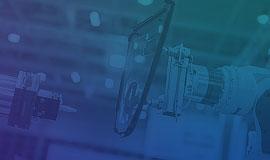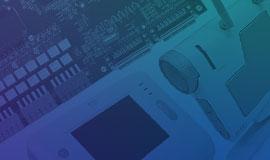By Trevor Smouter | Feb 25, 2014
The air is absolutely still in the frigid early morning and across the neighborhood lazy clouds of white vapor drift slowly up from the heated homes. On the nightstand, your phone’s dimmed screen subtly updates to show 5:55AM, triggering a riot of electrons that goes completely unnoticed by you as you sleep. An artificial sunrise imperceptibly brightens the room and by 6:00AM the room is already half bright. You start to stir and open your eyes.

In the basement, the on-demand water heater cycles on in anticipation of you getting into the shower. As you reach the bathroom the lights slowly come up and during your shower they reach full brightness. In the kitchen the preloaded coffee maker starts to brew your morning cup.
As you head out the door for work, your car is already warming up in the driveway. You hop in the car and the radio station changes to an easy rock station. While you drive off to work the car brings you up to speed on the overseas emails you received during the night.
So what happened here? Is this some science fiction story?
No, this is just one of scenarios made possible by the Internet of Things (IoT) and it’s happening right now. If you research IoT you’ll probably end up more confused than when you started, but it goes far beyond home automation. There concept of the IoT is nebulous and still taking shape but there are some basic understandings we can discuss. Unless you are talking about a pencil, a brick, or a pile of dirt, everything in our daily lives today has at least a small micro-controller in it. Any device you can think of has some sort of smarts in it. The IoT revolution occurring today is predicated on the idea of taking these little computers and connecting them to a network: the internet of things. What these devices do on the network, how they react, and the ultimate goals are not clearly defined but there are many companies and institutions working these details out.
From social media to omnipresent smart phones, we are knee-deep in the internet every day. The effects on other industries, such as music, newspapers, telephony, etc., were unexpected. We are now on the precipice of the IoT revolution and it’s happening much faster than the internet did. Of course, IoT is just the extension of the internet from the virtual into the reality of our lives.
Okay, so everything is connected to the net. So what?
Well, this is where the real magic comes into play. The illustration above provided a domotic example of IoT, where connected devices in the home helped to reduce energy consumption, increase safety and security, and add comfort and convenience. Smart and connected switches and outlets provided both sensors (motion, light, and sound detection) while also controlling the wired devices such as the lights and water heater. Then controllers are used to read, interpret and control the devices. By tying these devices together, new and novel applications can be generated, like adjusting the lighting for a more natural and calm way to wake up. These applications can be instituted as easily as downloading a new app for your smart phone. In the next few years we’ll start to see more and more connected devices come to market that will have multiple connection options to multiple controller systems. Some of this functionality will be possible by consumer-programmable devices, using pictographic programming languages that don’t require conventional programming skills to make novel connections between devices.
This is the area that will see the greatest advancements when it comes to the IoT. While pictographic programming languages are already available, there will be advances in using these features with computational intelligence such as fuzzy logic and neural networks to make controllers that keep track of how we use them and they will start to make decisions on the controlled states for us. While manufacturers don’t need to decide how the connected devices will be used in the scheme of things, they do need to think about how the devices will connect and what type of controls or sensors will be exposed to external influence.
Again, these concepts are just a small slice of what is possible with IoT product development. Many other applications such as retail, security, industrial, transportation, utilities, environmental, and agriculture will all benefit from the connectivity of IoT both now and into the future.
How can your company catch the IoT wave?
In a word, connectivity. The first hurdle for product development companies is getting devices connected to the internet. This doesn’t mean appliance manufacturers should start putting W-Fi modules in their toasters, but they should keep the possibility in mind and get prepared. By proving connectivity solutions beforehand, companies are ready to pull the trigger when the time comes. Otherwise, development cycles of a year or more mean they’ll be behind the pack.
When thinking about connectivity there are many options. The obvious wired (Ethernet) or wireless solutions could be a great fit for the home, where internet connectivity abounds. The personal network can be facilitated using Bluetooth, by piggybacking on connected smart phones which are very popular with consumers. For mobile situations and devices that can’t depend on local networks to connect, GSM options can be leveraged within metropolitan/urban areas that have cell phone coverage. How a device connects to the net is largely influenced by the device itself, how it is used, where it is used, and the bandwidth requirements to accomplish related tasks. As controllers develop and interaction protocols become standardized, manufacturers will need to develop the hooks that let their devices connect in constructive ways to the IoT.
One thing is for sure: the Internet of Things is upon us and now is the time for manufacturers to start thinking about how to connect. Then they can leave the real magic up to the 3rd party developers who will be supporting their devices.
Ready to get started? Contact Nuvation Engineering to learn about the 800 projects we’ve already delivered, and learn how our electronic product design experts can accelerate the time to market for your product.



